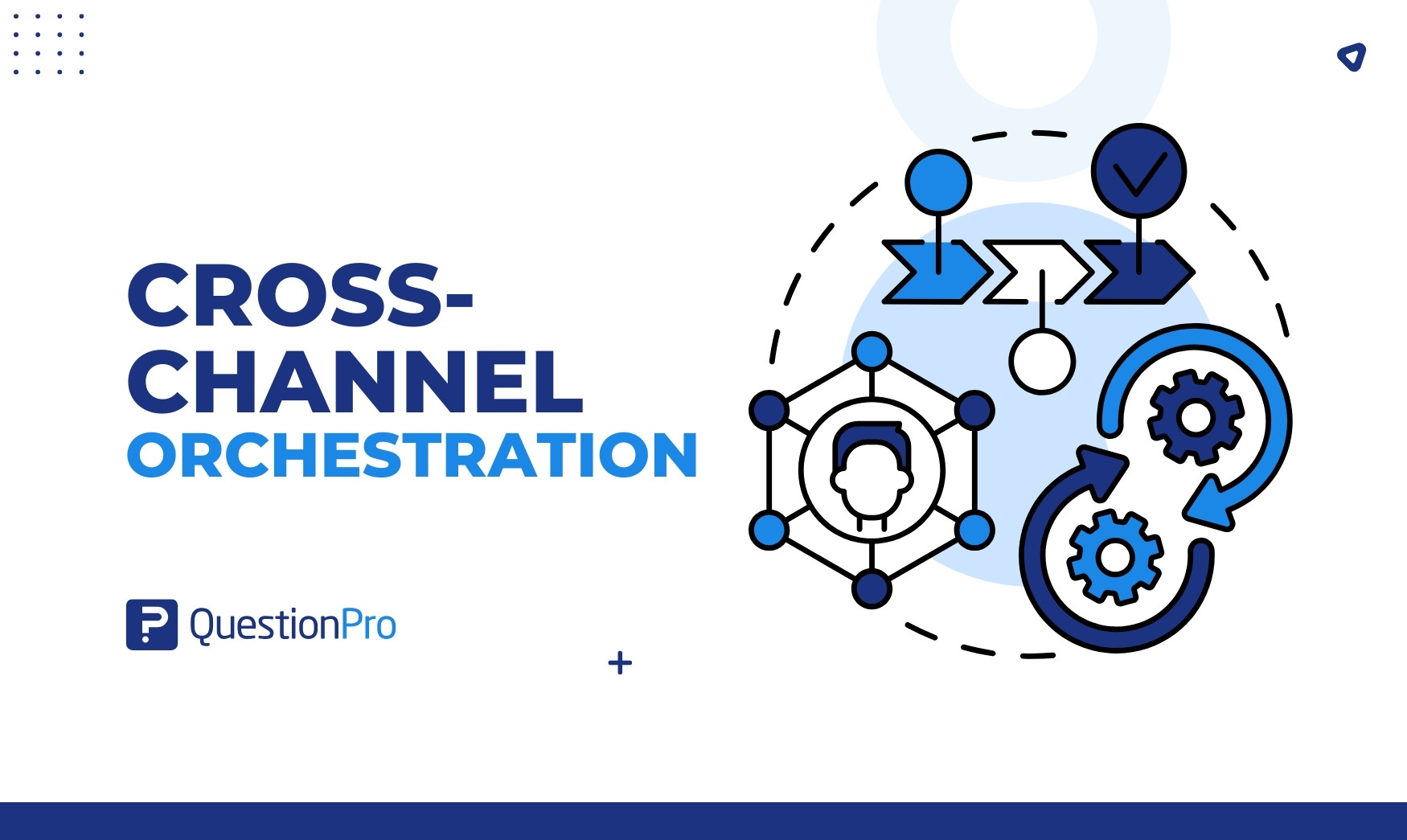
Customers interact with brands across a multitude of channels, from websites and social media to email and physical stores. Businesses employ cross-channel orchestration to engage customers and provide an excellent experience effectively.
This strategic approach involves coordinating and optimizing customer interactions across various marketing and communication channels. In this blog, we’ll explore cross-channel orchestration and how to implement it successfully.
What is Cross-Channel Orchestration?
Cross-channel orchestration is like a smart plan used in marketing and customer engagement. It’s all about ensuring that everything works together smoothly when a business talks to customers through different channels.
The primary goal of this orchestration is to provide a smooth and consistent experience for customers, regardless of which channels they use to interact with a business or brand.
It’s about ensuring that a cross-channel customer receives a unified and personalized message or experience, whether they engage through email, social media, a website, a mobile app, an in-store visit, or any other touchpoint. It allows you to align with your cross-channel messaging and actions across these various channels, creating a smooth and satisfying customer journey.
Importance of Cross-Channel Orchestration
It is important for businesses in today’s competitive digital age. Here are a few important reasons why it is important for your business success:
Effective customer data management
It allows you to efficiently gather, integrate, and analyze customer data from multiple channels. This centralized customer data management is important for your understanding of consumer behavior, customer preferences, and trends, enabling data-driven decision-making.
Optimized cross-channel marketing strategy
With this orchestration, you can strategically plan and execute their marketing campaigns. It ensures that marketing messages are consistent and synchronized across various marketing channels, leading to a more unified and impactful marketing strategy.
Enhanced customer engagement
The ability to engage customers across different marketing channels is a key benefit of cross-channel orchestration. You can boost customer involvement by meeting customers where they are most active, leading to increased interaction, higher conversion rates, and stronger customer relationships.
Maximized marketing channel potential
You can tap into the full potential of your marketing channels through cross-channel orchestration. It allows for efficient resource allocation, eliminating redundancies, and optimizing marketing efforts on each channel. This leads you to cost-efficiency and improved return on investment.
Improved cross-channel campaign performance
It enables continuous monitoring and analysis of cross-channel campaign performance. By measuring the impact of marketing efforts on more than one channel, you can identify what works best, make data-backed adjustments, and refine strategies for better results over time.
Steps to implement cross-channel orchestration
Implementing this orchestration involves a strategic approach to coordinate and optimize customer interactions across various marketing and communication channels. Here are the key steps to implement cross-channel orchestration effectively:
Define your customer journey
Start by mapping out the customer journey from the initial point of contact with your brand to the final conversion and beyond. Identify all the touchpoints where customers interact with you. Understand the stages customers go through and the channels they prefer at each stage.
Collect and analyze data
Gather data from all relevant channels and sources. This data may include customer demographics, purchase history, website interactions, email engagement, social media activity, and more. Effective cross-channel orchestration relies on robust data collection and analysis. Use analytics tools to gain insights into consumer behavior and preferences.
Segment your audience
Divide your consumer base into distinct segments based on shared characteristics, behaviors, or preferences. Segmentation allows you to make tailored experiences for different consumer groups. For example, you might segment customers by demographics, purchase history, involvement level, or location.
Create a unified strategy
Develop a comprehensive marketing strategy that outlines how you will communicate with each consumer segment across different channels. Ensure that your texting, branding, and offers remain consistent and aligned with your overall business objectives.
This strategy should include a content calendar, campaign schedules, and guidelines for maintaining a unified brand image.
Implement automation tools
Use automation tools to make your marketing tasks easier. These tools can help you plan when to send messages and track how customers engage with your business. They also let you divide your audience into groups and set up automatic responses based on what customers do.
Choose the right channels
Carefully select the channels that are most relevant to your consumer and objectives. Different channels may be more effective for reaching specific consumer segments. Consider email, social media, SMS, push notifications, websites, mobile apps, and offline channels, and create a channel mix that best suits your target consumer.
Personalize content and messaging
Tailor your content and messaging to match the preferences and needs of each customer segment. Use the data collected to create personalized experiences. Personalization can include customized product recommendations, dynamic content, and texting that reflect a customer’s previous interactions with your brand.
Test and optimize
Continuously monitor the performance of your campaigns. Conduct A/B testing to assess the effectiveness of different messages and strategies. Use analytics and key performance indicators (KPIs) to identify areas for improvement. Regularly optimize your campaigns based on the data and insights gathered.
Maintain consistency
Ensure that your branding, texting, and consumer experience are consistent across all channels. Consistency reinforces your brand identity and helps customers recognize and trust your brand, regardless of the channel they choose to engage with.
What is an example of cross-channel marketing?
Here are examples of cross-channel campaigns:
Example: “Pokémon GO” Launch Campaign
When the mobile game “Pokémon GO” was launched in 2016, it became a global phenomenon. The success of the game was, in part, due to an exceptional marketing strategy employed by its developer, Niantic, Inc.
- Mobile app (Game): The heart of the campaign was the mobile app itself. “Pokémon GO” was designed for smartphones, allowing players to use their GPS to explore the real world and catch virtual Pokémon. The app served as the primary engagement channel.
- Social media (Facebook, Twitter, Instagram): Niantic used social media to create excitement and get people talking about their game. They shared teaser videos, sneak peeks, and news about when the game would come out. Social media lets players share their game experiences, connect with other players, and join in challenges and events.
- YouTube: Niantic created promotional videos and tutorials that were uploaded to YouTube. These videos showcased gameplay, explained key features, and shared success stories. YouTube served as an educational and promotional channel.
- Email marketing: Users who signed up for the game received email updates about upcoming features, events, and in-game promotions. Email marketing helped retain players by keeping them informed about game developments.
- Events and community gatherings: Niantic organized real-world events and community gatherings, encouraging players to come together in physical locations to catch rare Pokémon and participate in challenges. These events bridged the gap between the virtual and physical worlds.
- Partnerships: Niantic teamed up with different businesses like restaurants and stores to make special offers and connections with the game. This made more people visit these places and try out new things.
- Press coverage and public relations: The game became really famous in the media. Newspapers, magazines, and online websites talked about it a lot with articles, interviews, and reviews. Niantic’s efforts to promote the game made sure people stayed excited about it.
The reason the “Pokémon GO” campaign did so well is because it combined different ways of reaching players, making the whole experience feel connected and really fun.
How can QuestionPro help with Cross-Channel Orchestration?
QuestionPro is a versatile survey and feedback platform that can assist you with various aspects of this channel orchestration. While it primarily focuses on gathering customer feedback and insights, it plays a crucial role in understanding consumer behavior and preferences across channels. Here’s how QuestionPro can help with cross-channel orchestration:
Customer data collection
- Surveys: QuestionPro allows you to create customized surveys that can be distributed through multiple channels, including email, websites, social media, and mobile apps. By collecting feedback from customers across various touchpoints, you can gather valuable data to understand their preferences, pain points, and expectations.
Customer segmentation
- Demographic and behavioral data: With QuestionPro’s survey capabilities, you can collect demographic and behavioral data from respondents. This information can be used to segment your audience effectively based on characteristics and behaviors.
Feedback analysis
- Text and sentiment analysis: QuestionPro provides software for text and sentiment analysis. By analyzing open-ended responses from consumers, you can gain insights into their sentiments and opinions regarding your brand, products, or services.
Feedback integration
- Integration with other software: QuestionPro can integrate with other marketing and CRM platforms that you use for cross-channel orchestration. This ensures that your marketing strategies can effectively utilize the feedback and insights gathered through surveys.
Monitoring and optimization
- Real-time reporting: QuestionPro provides real-time reporting and analytics, enabling you to monitor consumer feedback and insights as they come in. This information can be used to make data-driven decisions and optimize your cross-channel marketing strategies.
Adaptation to customer behavior
- Behavioral insights: By analyzing survey data from QuestionPro, you can gain insights into consumer behavior and preferences across different channels. This information helps you adapt your cross-channel strategies to align with consumer expectations and behaviors.
Multi-channel surveys
- Survey distribution: QuestionPro supports distributing surveys through multiple channels, including web links, email invitations, social media, and mobile apps. This flexibility allows you to reach customers where they are most active.
By following these steps, you can implement Cross-Channel Orchestration successfully. QuestionPro can be a valuable customer data platform for businesses aiming to implement it by providing the means to collect customer feedback, analyze data, segment audiences, and personalize communications effectively.
It helps you change your strategies based on what customers like and do, which makes your approach more about what customers want. Contact QuestionPro today for a free trial or learn more!







